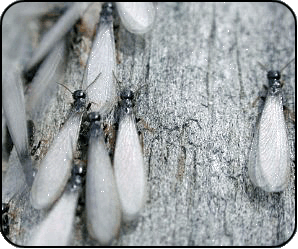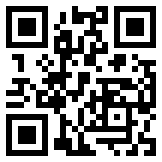Please note: Our office will be closed on Thanksgiving Day, Thursday, November 28th and also on Saturday, November 30th.
We will be open on Friday November 29th.
St. Louis Termite Swarmers
Subterranean Termites

Most likely the only termite you will see in your home is the termite swarmer also called an alate or reproductive. Subterranean termites in St. Louis and the Metro East live in the ground and build special protective mud tubes. Termites do not live in the home, but travel from the colony in the soil, to the food source. Termite Control methods include chemical barrier or liquid "treatments" and termite bait and monitoring systems.
Termite swarming season, the time of year when flying termites emerge, usually runs from mid-April to mid-June in the Saint Louis Area. Subterranean termite swarmers may emerge as early as February or as late as late June. Any flying insects in the home outside of this time period are probably not termites.
Often a structure can be infested with subterranean termites with little evidence of a termite problem until swarmers emerge. Subterranean termites are common in most of the U.S. When a termite colony becomes large enough, some of the termites turn into reproductive termite swarmers. When the time is right, usually a warm spring day after a rain, the mature swarmers emerge. Most of these alates will die but some termite swarmers will pair up with termite swarmers from a nearby colony and become king and queen of a new colony.
Swarmer termites closely resemble ants with wings but there are key differences to tell them apart. Termites and ants both have 2 pairs or wings. On Termite swarmers, the wings are the same size and shape and are easily broken off. Ants have a smaller set of wings and a larger set. Ants have a distinct pinched waist while termite alates have a thicker waist. Finally, termite antenna are straight while an ant has elbowed or bent antenna.
Drywood termites
Drywood and Dampwood termite are not found in the Saint Louis area. Drywood termites are found in a few southern and western states and live within furniture or other wooden objects. These termite swarmers will bore an entrance into a piece of wood, then plug the hole with a kind of cement and excavate the first chamber. When the eggs hatch the worker termites take over the work and care for young, gather food and protest the colony. When the time is right, the workers will make small holes in the surface of the wood for the drywood termite swarmers to emerge. These holes are later plugged.





